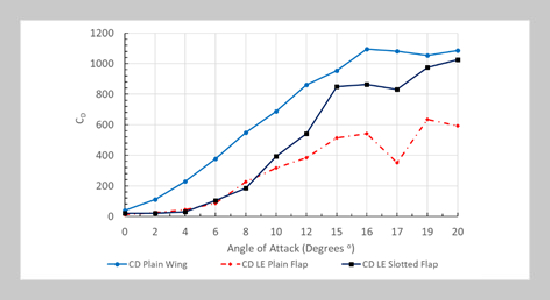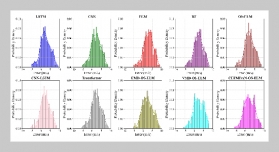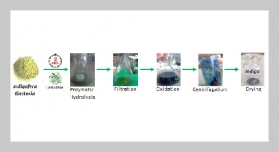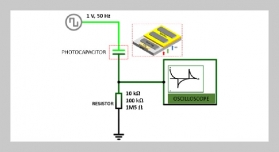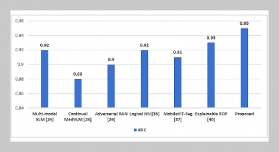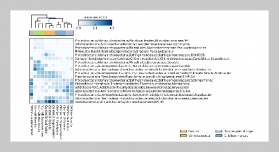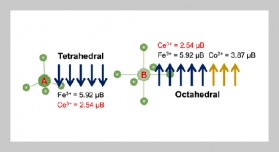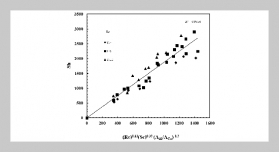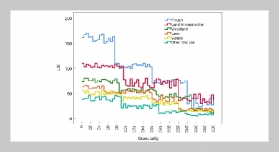- [1] S. Gudmundsson. General Aviation Aircraft Design : Applied Methods. First edit. New York: Butterworth�Heinemann is an imprint of Elsevier, 2013, 1048.
- [2] C. E. Dole, J. E. Lewis, J. R. Badick, and B. A. John�son. Flight theory and aerodynamics. 2017th ed. 4. 3. Hoboken, New Jersey: John Wiley & Sons, Inc., 2017, 57–71.
- [3] B. Nebenführ, H. Yao, S. H. Peng, and L. Davidson. “Hybrid RANS/LES simulations for aerodynamic and aeroacoustic analysis of a multi-element airfoil”. In: 19th AIAA/CEAS Aeroacoustics Conference. Berlin, Germany: American Institute of Aeronautics and As�tronautics, 2013, 64. DOI: 10.2514/6.2013-2066.
- [4] K. A. Pascioni and L. N. Cattafesta. “Aeroacous�tic Measurements of Leading-edge Slat Noise”. In: 22nd AIAA/CEAS Aeroacoustics Conference, 2016. May. Lyon, France: American Institute of Aeronautics and Astronautics, 2016, 1–20. DOI: 10.2514/6.2016-2960.
- [5] K. A. Pascioni, L. N. Cattafesta, and M. M. Choud�hari. “An experimental investigation of the 30P30N multi-element high-lift airfoil”. In: 20th AIAA/CEAS Aeroacoustics Conference. January 2015. Atlanta, Georgia: American Institute of Aeronautics and Astronau�tics, 2014, 1–16. DOI: 10.2514/6.2014-3062.
- [6] K. A. Pascioni and L. N. Cattafesta, (2018) “Unsteady characteristics of a slat-cove flow field" Physical Review Fluids 3(3): 34607. DOI: 10.1103/PhysRevFluids.3.034607.
- [7] B. W. Pomeroy, J. M. Diebold, P. J. Ansell, and M. S. Selig, (2014) “Study of burst wakes in a multi-element airfoil flowfield" AIAA Journal 52(4): 821–831. DOI: 10.2514/1.J052680.
- [8] Y. Zhang, H. Chen, K. Wang, and M. Wang, (2017) “Aeroacoustic prediction of a multi-element airfoil us�ing wall-modeled large-eddy simulation" AIAA Journal 55(12): 4219–4233. DOI: 10.2514/1.J055853.
- [9] N. Deng, Q. Qu, and R. K. Agarwal. “Numerical study of the aerodynamics of rectangular multi�element wing in ground effect”. In: 2018 Applied Aero�dynamics Conference. Atlanta, Georgia: American In�stitute of Aeronautics and Astronautics, 2018, 1–17. DOI: 10.2514/6.2018-4115.
- [10] A. M. Chuen and W. M. Chan. “Mesh effects on Flow Solutions for a 2-d Multi-Element Airfoil Using Struc�tured Overset Methods”. In: AIAA Aviation 2020 Fo�rum. 1 PartF. AIAA, 2020, 1–32. DOI: 10.2514/6.2020-3222.
- [11] Y. Jin, F. Liao, and J. Cai, (2020) “Numerical simulation of 30p30n multi-element airfoil using delayed detached�eddy simulation" Aiaa Aviation 2020 Forum (June): DOI: 10.2514/6.2020-2556.
- [12] S. P. Hariyadi, N. Pambudiyatno, Sutardi, and P. Fungky Dyan. “Aerodynamic Characteristics of the Wing Airfoil NACA 43018 in Take Off Conditions with Slat Clearance and Flap Deflection”. In: Lecture Notes in Mechanical Engineering. January. Surabaya: Springer, 2023, 220–229. DOI: 10.1007/978-981-19-0867-5_27.
- [13] S. H. S. Putro, S. Sutardi, W. A. Widodo, N. Pam�budiyatno, and I. Sonhaji, (2022) “Effect of Leading�Edge Gap Size on Multiple-Element Wing NACA 43018" International Review of Aerospace Engineering (IREASE) 15(12): 30–40.
- [14] S. Hariyadi S.P., B. Junipitoyo, W. A. Widodo, I. Son�haji, and F. Dyan Pertiwi, (2022) “Numerical Simula�tion Using Slats, Slots, and Flaps in Steady Flight Condi�tions" Advances in Science and Technology: 22–31. DOI: https: //doi.org/10.4028/p-d376fs.
- [15] H. M. Koch. “Reduction of Aircraft Noise by Wing De�sign and Add-On Technologies". (phdthesis). University of Technology Braunschweig, 2021, 208.
- [16] R. Griesmaier and H.-G. Raumer, (2022) “The Factor�ization Method and Capon’s Method for Random Source Identification in Experimental Aeroacoustics" Inverse Problems 8(11):
- [17] H.-G. Raumer, D. Ernst, and C. Spehr, (2022) “Com�pensation of Modeling Errors for the Aeroacoustic Inverse Problem with Tools from Deep Learning" Acoustics 4(4): 834–848. DOI: 10.3390/acoustics4040050.
- [18] T. A. Smith and C. A. Klettner, (2022) “Airfoil Trailing�edge Noise and Drag Reduction at a Moderate Reynolds Number Using Wavy Geometries" Physics of Fluids 34(11): 117107. DOI: 10.1063/5.0120124.
- [19] H. K. Jawahar, S. A. S. Ali, and M. Azarpeyvand. “Aeroacoustic Analysis of Slat Tones”. In: Proceedings of INTER-NOISE 2021 - 2021 International Congress and Exposition of Noise Control Engineering. Washing�ton D.C., 2021, 1–15. DOI: 10.3397/IN-2021-3202.
- [20] H. Kamliya Jawahar, S. A. Showkat Ali, and M. Azarpeyvand, (2021) “Serrated slat cusp for high-lift device noise reduction" Physics of Fluids 33(1): 1–44. DOI: 10.1063/5.0035178.
- [21] J. Watkins and A. Bouferrouk, (2022) “The Effects of a Morphed Trailing-Edge Flap on the Aeroacoustic and Aerodynamic Performance of a 30P30N Aerofoil" Acous�tics 4(1): 248–267. DOI: 10.3390/acoustics4010015.
- [22] R. J. Ferris, J. Appelbaum, and M. R. Khorrami. “Sim�ulations of a Full-Scale Aircraft with Installed Air�frame Noise Reduction Simulations of a Full-Scale Aircraft with Installed Airframe Noise Reduction Technologies”. In: June 2018. 2019. DOI: 10.2514/6.2018-2974.
- [23] Y. Zhang, B. Bai, D. Lin, and P. Liu, (2023) “A Numeri�cal Study on the Flap Side-Edge Noise Reduction Using Passive Blowing Air Concept" Aerospace 10(360): 17.
- [24] Y. Y. Niu, S. H. Liu, C. C. Chang, and T. I. Tseng, (2012) “A preliminary study of the three-dimensional aerodynamics of flapping wings" Journal of Applied Science and Engineering 15(3): 257–263.
- [25] S. W. Chuang, F. L. Lih, and J. M. Miao, (2012) “Effects of reynolds number and inclined angle of stroke plane on aerodynamic characteristics of flapping corrugated airfoil" Journal of Applied Science and Engineering 15(3): 247–256.
- [26] A. Kermode, R. Barnard, and D. Philpott. Mechanics of Flight. Harlow, Essex, England: Pearson Education Limited, 2006.
- [27] A. K. Kundu. Aircraft Design. First Edit. New York: Cambridge University Press, 2010, 650.
- [28] Fluent Inc. FLUENT 6.3 User’s Guide. 2006th ed. 11. 8. Lebanon, NH: Fluent Inc., 2006, 727. DOI: 10.1016/0167-4048(92)90125-b.
- [29] ANSYS Fluent Theory Guide. ANSYS Fluent Theory Guide. 2013th ed. 15317. November. Canonsburg, PA: ANSYS, Inc, 2013, 724–746.
- [30] N. Mulvany, L. Chen, J. Tu, and B. Anderson, (2004) “Steady-State Evaluation of Two-Equation RANS (Reynolds-Averaged Navier-Stokes) Turbulence Models for High-Reynolds Number Hydrodynamic Flow Simula�tions" Department of Defence, Australian Govern�ment: 1–54.
- [31] S. Hariyadi Suranto Putro, Sutardi, W. A. Widodo, and I. Sonhaji. “Numerical Study of Secondary Flow Characteristics on the Use of the Winglets”. In: Jour�nal of Physics: Conference Series. 1726. 1. Samarinda: Journal of Physics: Conference Series, 2021, 1–10. DOI: 10.1088/1742-6596/1726/1/012012.
- [32] J. D. Anderson Jr. Computational Fluid Dynamics The Basics with Applications. New York: McGraw-Hill, Inc, 1995, 1–547. DOI: 10.1017/CBO9780511780066. arXiv: arXiv:1011.1669v3.
- [33] S. Setyo Hariyadi, Sutardi, W. Widodo, and M. Mustaghfirin, (2018) “Aerodynamics Analysis of the Wingtip Fence Effect on UAV Wing" International Re�view of Mechanical Engineering 12(10): 837–846. DOI: 10.15866/ireme.v12i10.15517.
- [34] F. M. Rahmat, S. Hariyadi, and N. Pambudiyatno. “Effect of Using Triangular Vortex Generator Straight Arrangement in Air Naca 43018 with Smoke Gen�erator”. In: Proceedings of the International Conference on Advance Transportation, Engineering, and Applied Science (ICATEAS 2022). Surabaya: Atlantis Press In�ternational BV, 2023, 40–51. DOI: 10.2991/978-94-6463-092-3.
- [35] Z. T. Dayanti, S. Hariyadi, and I. S. Rifdian. In: Proceedings of the International Conference on Ad�vance Transportation, Engineering, and Applied Science (ICATEAS 2022). Surabaya: Atlantis Press Interna�tional BV, 2023, 52–69. DOI: 10.2991/978-94-6463-092-3.
- [36] F. Nur Wahyu, S. Hariyadi, and N. Pambudiyatno. “Experimental Study of Airflow Characteristics in Airfoil NACA 43018 with the Addition of Gothic Vortex Generator Using Visualization of Smoke Gen�erator”. In: Proceedings of the International Conference on Advance Transportation, Engineering, and Applied Science (ICATEAS 2022). Surabaya: Atlantis Press In�ternational BV, 2023, 86–99. DOI: 10.2991/978-94-6463-092-3.
- [37] M. S. Genç, G. Özkan, H. H. Açikel, M. S. Kiri¸s, and R. Yildiz. “Effect of tip vortices on flow over NACA4412 aerofoil with different aspect ratios”. In: EPJ Web of Conferences. 114. Turkey: EDP Sciences, 2016, 2–5. DOI: 10.1051/epjconf/201611402027.
- [38] H. Demir, M. Özden, M. S. Genç, and M. Çagda¸s. ˇ “Numerical investigation of flow on NACA4412 aero�foil with different aspect ratios”. In: EPJ Web of Con�ferences. 114. Turkey: EDP Sciences, 2016, 1–5. DOI: 10.1051/epjconf/201611402016.
- [39] M. S. Genç, M. Özden, H. H. Açikel, H. Demir, and I. Isabekov. “Unsteady flow over flexible wings at different low Reynolds numbers”. In: EPJ Web of Con�ferences. 114. Turkey: EDP Sciences, 2016, 1–6. DOI: 10.1051/epjconf/201611402030.
- [40] “Numerical investigation of the wake transition and aerodynamic efficiency of the two-dimensional propulsive wing”. In: 125013. November. AIP Pub�lishing, LLC, 2022, 1–12.
- [41] , (2022) “Applied sciences Aerodynamic-Aeroacoustic Op�timization of a Baseline Wing and Flap Configuration" Applied Sciences 12(1063): 1–19.
- [42] E. Vaezi and S. A. S. Madani. “A novel use of artificial intelligence for the modeling of wing aeroacoustics : An investigation on the efficacy of winglet cant angle”. In: November. AIAA, 2021, 1–12. DOI: 10.13140/RG.2.2.26863.97447.
- [43] T. J. Newman. “Towards a Silent Fan: an Investigation of Low-speed Fan Aeroacoustics". (phdthesis). University of Cambridge, 2014. DOI: 10.17863/CAM.14098.


